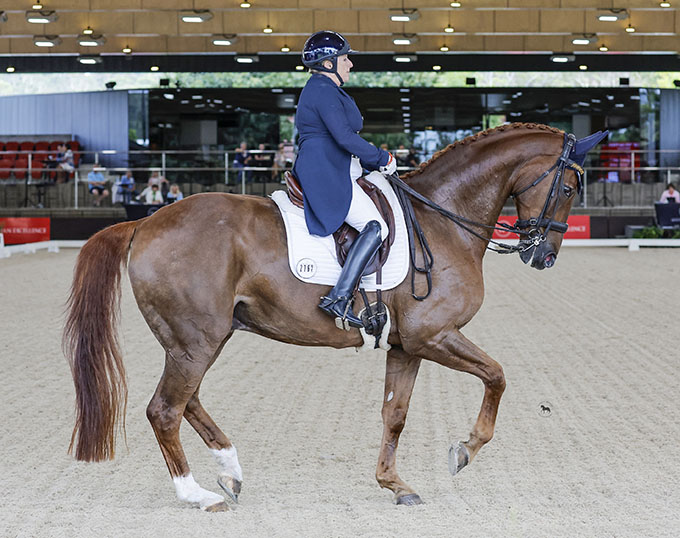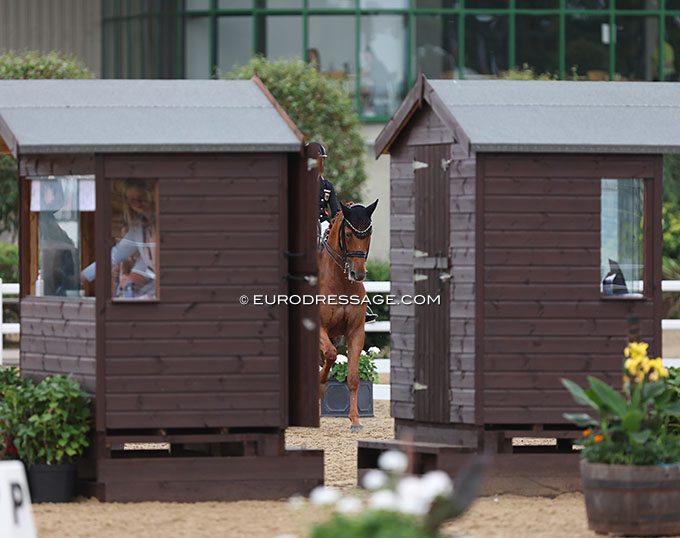
The first drafts of the proposed FEI Rule changes have been published and are now available online on the FEI website.
FEI Periodical Rules Revision Policy
In accordance with the FEI Periodical Rules Revision Policy, the FEI Endurance Rules are the only ones undergoing a full revision but some modifications of lesser scope have been introduced to the other FEI Rules and Regulations as well. The focus of this year’s changes is on horse welfare with strong proposals featured in the FEI General Regulations, the FEI Veterinary Regulations, and several discipline rules.
“At the heart of the FEI's mission lies an unwavering commitment to horse welfare,” FEI Secretary General Sabrina Ibáñez said. “This year, we have been fortunate to receive insightful horse welfare-oriented proposals from the National Federations and Stakeholders alike. Our Technical Committees and Headquarters have attentively listened to the community and incorporated many invaluable proposals into the fabric of the Rules.
“An important development is the proposed addition of an Equestrian Charter to the FEI General Regulations as Appendix O, whereby all those involved in horse sport adhere to the FEI Code of Conduct for the Welfare of the Horse, and acknowledge and accept that at all times the Welfare of the Horse must be paramount by pledging to the FEI Equestrian Charter.
Measuring Noseband Tightness

“A new Appendix L reflecting the concept of Key Event Requirements, related to horse welfare and horse and human safety, will be added to the General Regulations.
“The National Federations and Stakeholders have seven weeks to revert to the FEI with their feedback on these proposals and I look forward to an exciting and fruitful dialogue,” the Secretary General concluded.
Main Changes
The main changes for dressage related to horse welfare by discipline are listed below.
Article 431.4 Dress – Spurs proposal to modify this article to specify that spurs are optional but when they are used, they must be made of metal. (Editor's note: read Eurodressage article on skin damage due to spurring)
Snaffle at Grand Prix Not Implemented (Yet)
The Dutch and Swedish federation requested a rule change that at 3* level the rider can choose between a snaffle and double bridle at Grand Prix level.
The FEI Dressage committee responded: Not supported, not based on welfare reasons. The FEI DTC has the unanimous understanding that the use of snaffle or double bridle is a technical (sport) matter and not a matter of wellbeing/welfare. We understand the topic of social (media) perception, but from the results of the online survey that were made available to this Committee we could not find scientific evidence, nor unquestionable data, that allow us to reach to a different conclusion at this moment. It is time to gather a multidisciplinary team, which includes experts from all stakeholders, to develop study/research to understand all pros and cons about the proposed change. Once this study/research is carried out, we will be in condition to have an informed, conscious and well-balanced opinion on the matter."
Oceania Concerned about Low CDI Participation

The FEI Dressage Committee supported the request and responded: "For CDI3* and above outside Europe and North America, an Athlete may ride in three Grand Prix classes (Grand Prix, Grand Prix Special and Grand Prix Freestyle). The Grand Prix and Grand Prix Special are open to all. The Grand Prix Freestyle is only open to the six (6) (minimum) to eighteen (18) (maximum including ties for 18th place) best Athlete/Horse combinations who qualified in the Grand Prix."
Austria/Germany Tried to Get More Collective Marks Again
The Austrian and German equestrian federation tried to get two collective marks again into the score sheets, stating: "After the athletes have finished their performance, one collective mark for the horse and one collective mark for the riders is awarded for general impression with no coefficient."
The FEI Dressage Committee denied the request. "This topic was addressed in 2018 by the Dressage Judging Working Group (Task Force) supported by the Nottingham Trend University, and it was concluded that collective marks exacerbate the cumulative impact on cognitive load. Not accepted."
Seven Judges at the European Youth Championships? No
IDOC believes that "at the L4/5* Judges meeting in Rome, there was a widespread understanding, that there is a need for 7 judges at the European Youth Championships (Ponies, JUN, YR and U25). It has been proven that the judge’s differences are minimized by increasing the number of judges from 5 to 7 (all big senior CH). As the European youth CH attract big numbers of starters, we believe this will improve the standard significantly. All other regional youth championship remain the same."
This idea was rejected by the FEI Dressage Committee. "Not supported, the DC prefers to have a JSP member at European Youth Championships."
Judging Supervisory Panel

Championships in Hartpury
The FEI Board is responsible for the appointment and removal of members of the JSP further to consultation with the Dressage Committee. JSP Members shall be appointed for 4 (four) year (renewable) terms. The Board shall have the right to apply staggered Terms in cases where all JSP members are outgoing and/or re-eligible in the same year.
Judges Can't Change Mark after the Score Sheet is Signed Off
Even though it seems to be very logical, it is not actually mentioned anywhere in the Rules. We had some situations with national judges changed their marks after the class and said that the fact that it is not permitted is not mentioned anywhere in the Rules. And indeed, it is not mentioned, so to avoid problems in the future would be nice to add this
The FEI Dressage Committee replied that "After each performance and after each Judge has given their collective mark and signed the sheets, these pass into the hands of the scorers. The marks are multiplied by the corresponding coefficients, where applicable, and then totaled. After signing and giving away the sheet, or electronically submitting the results (paperless), judges can no longer change their marks, with the exception of a situation, when a mark is missing, in which case the protocol should be given back to the judge, who will add the missing mark."
Ties at Children Championships
Ties at CDICh: Ties are not broken at CDICh shows, combinations are placed equally. Ties at CDIOs and FEI Championships. Individual Classification: In case of equality of percentage for the first three (3) places, the following system must be used to break the tie:
- The “technical” mark will be used; the Athlete/Horse combination with the higher “technical” mark will be ranked highest.
- If still tied, the highest total median score of the three (3) Technical Judges will decide the placing. Please refer to the FEI Dressage Rules.
- If still tied, the combinations will be placed equally.
And on Glitter Spray...
IDOC requested a rule amendment that glitter spray is permitted.
The FEI Dressage Committee replied that "Not supported; discreet use, especially in the youth classes, can be tolerated."
The memo detailing all the proposed changes to the FEI Dressage Rules is available here.
Photos © Astrid Appels - private
Related Links
Thomas Baur: "Are FEI Rules Only 'Guidelines' Now?"
FEI Introduces More Flexibility to Maternity Leave Provision in Ranking Rules
FEI Rule Changes relating to the Judging Supervisory Panel
The Judging Supervisory Panel, Giving the Greats Greater Confidence
IDRC Proposes Changes to 2011 Dressage Rules